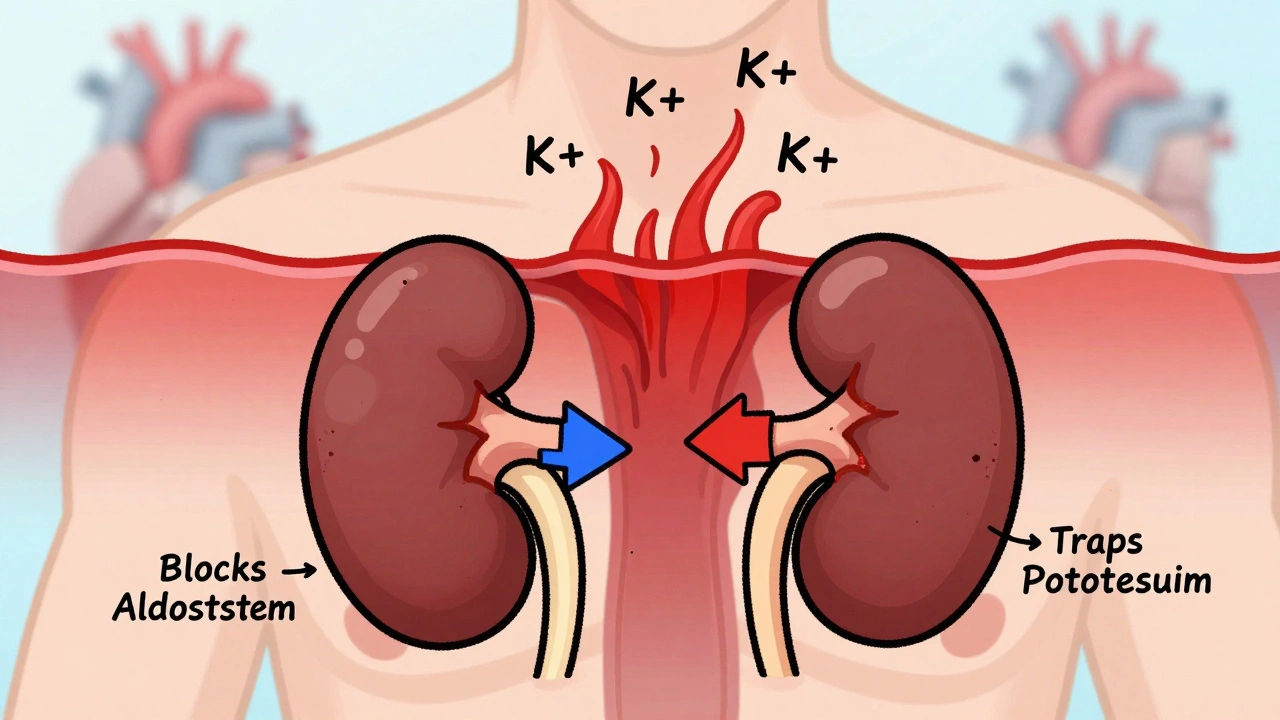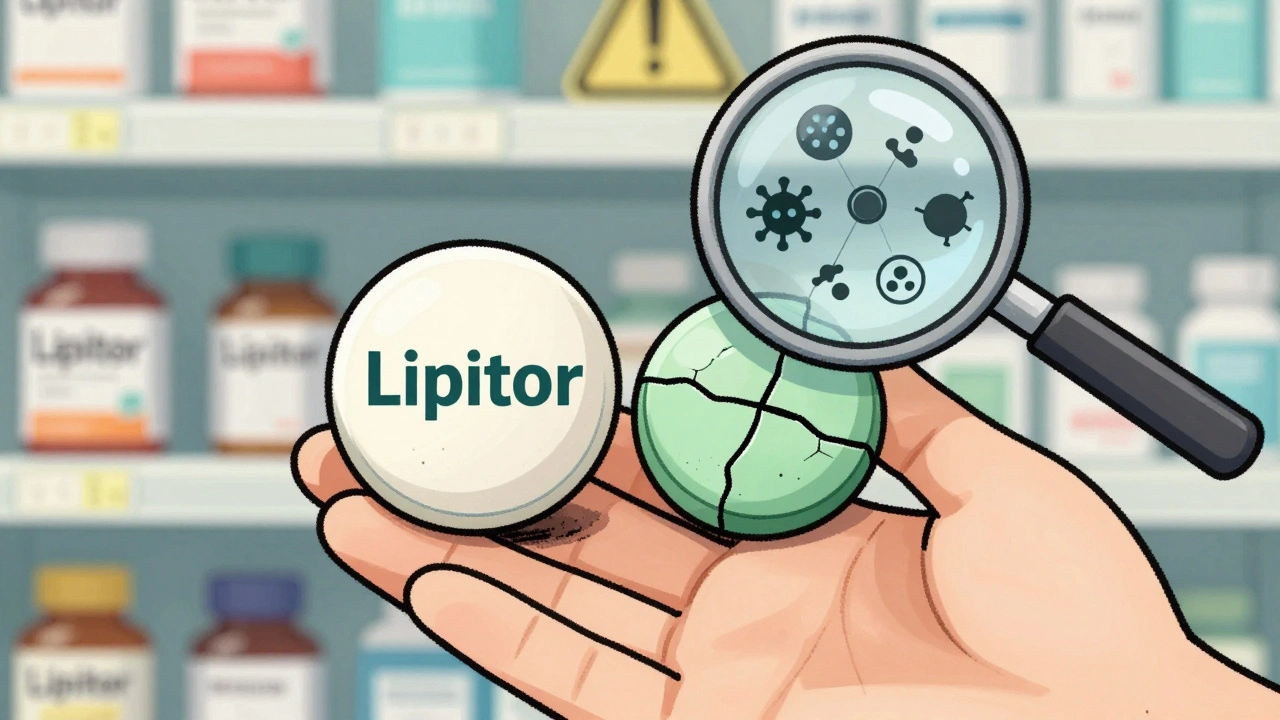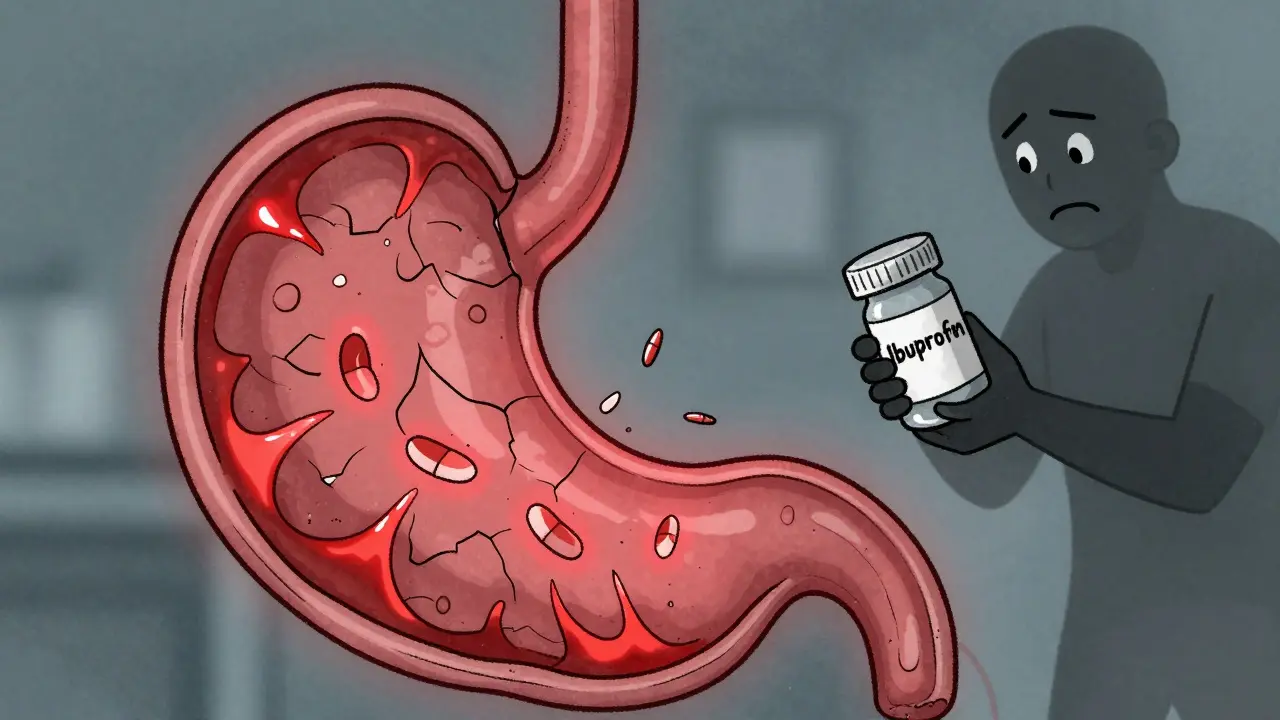If you have obstructive pulmonary disease-whether it’s COPD, chronic bronchitis, or emphysema-you’ve probably been told to exercise. But when every breath feels like a battle, the idea of moving more can feel impossible. The truth? Exercise doesn’t have to be hard. It just has to be smart. And it might be the most important thing you do for your lungs, your heart, and your quality of life.
Why Exercise Matters More Than You Think
People with obstructive pulmonary disease often avoid movement because they fear shortness of breath. But skipping activity makes things worse. Muscles weaken. Stamina drops. You get more tired doing simple things-like walking to the fridge or climbing stairs. It becomes a cycle: less movement → weaker body → more breathlessness → even less movement.
Research from the American Thoracic Society shows that people with COPD who stick to regular exercise reduce hospital visits by up to 40%. Why? Because exercise trains your body to use oxygen more efficiently. It strengthens your diaphragm, improves circulation, and lowers anxiety around breathlessness. You don’t need to run a marathon. You just need to move consistently.
Start Small-Really Small
You don’t need to push yourself to exhaustion. In fact, pushing too hard can backfire. Start with what you can do today. If you can walk for two minutes without stopping, do that. Do it again tomorrow. Then add 30 seconds. That’s it.
Here’s a real example: Margaret, 68, from Newcastle, started with walking around her living room three times a day. Each lap took 90 seconds. After two weeks, she could walk to her mailbox and back. By month three, she was walking the block. Now, she walks 20 minutes every morning. She didn’t change her meds. She didn’t buy special gear. She just moved a little more each day.
Set a goal of 10 minutes a day. Do it in three 3-minute bursts if needed. Use a timer. Celebrate every win-even if it’s just standing up without needing to catch your breath.
Choose the Right Type of Exercise
Not all exercise is created equal when you have obstructive pulmonary disease. Focus on three key types:
- Walking-the easiest, most effective option. Use a rollator or walking stick if you need balance support. Walk at a pace where you can still talk in short sentences.
- Seated exercises-if standing is too tiring, try arm curls with light weights, leg lifts, or seated marching. You can do these while watching TV.
- Breathing retraining-this isn’t optional. Techniques like pursed-lip breathing and diaphragmatic breathing help control breathlessness during activity.
Pursed-lip breathing: Inhale through your nose for 2 seconds. Purse your lips like you’re whistling. Exhale slowly for 4-6 seconds. Do this before you start moving, and keep doing it during activity. It keeps your airways open longer, so you don’t feel as winded.
Diaphragmatic breathing: Lie on your back with one hand on your chest, the other on your belly. Breathe in through your nose so your belly rises-not your chest. Exhale slowly through pursed lips. Practice this for 5 minutes twice a day. It strengthens the muscle that does most of your breathing.
Use Pulmonary Rehabilitation
If your doctor hasn’t mentioned pulmonary rehab, ask. It’s a structured program-usually run by hospitals or community health centers-that combines supervised exercise, education, and breathing support. In Australia, Medicare covers most of the cost if you’re referred by your GP.
Participants in these programs don’t just get stronger. They learn how to manage flare-ups, use oxygen correctly, and adjust their daily routines. Studies show people who complete 8-12 weeks of rehab improve their walking distance by 50% or more. And the benefits last for years.
Don’t wait for a crisis to sign up. Even if you’re feeling okay now, rehab builds a buffer against future decline.

When to Pause-And When to Push
You don’t need to push through pain or dizziness. But you also don’t need to stop at the first sign of breathlessness. Here’s a simple guide:
- Stop if: You feel chest pain, dizziness, nausea, or your lips/fingertips turn blue.
- Slow down if: Your breathlessness goes from a 4 to a 7 on a scale of 1-10 (1 = barely noticeable, 10 = can’t speak).
- Keep going if: You’re at a 5-6 and can still speak in short phrases. That’s the sweet spot for building endurance.
Use the Borg Scale of Perceived Exertion-it’s simple, widely used in clinics, and helps you tune into your body. Most people with COPD aim to stay between 3 and 6 during daily activity.
Tools That Actually Help
You don’t need expensive gadgets. But a few simple tools make a big difference:
- Portable oxygen-if you’re prescribed it, use it during activity. Oxygen isn’t a crutch. It’s a performance enhancer.
- A pedometer or phone app-track steps. Not to compete, but to see progress. Even 1,500 steps a day is better than 500.
- A cooling vest or fan-heat and humidity make breathing harder. A handheld fan pointed at your face can reduce breathlessness instantly.
- Resistance bands-light, safe, and easy to store. Great for seated arm and leg exercises.
One woman in Sydney told me she keeps a small battery-powered fan in her purse. When she feels tightness walking to the shops, she turns it on. Says it’s like a reset button for her lungs.
Plan for Bad Days
Some days, your lungs just won’t cooperate. That’s normal. Don’t guilt-trip yourself. On those days, swap walking for seated breathing exercises. Or just lie down and practice diaphragmatic breathing for 10 minutes.
Keep a simple log: date, activity, breathlessness level, how you felt afterward. You’ll start noticing patterns. Maybe you do better in the morning. Maybe cold air triggers you. Maybe you need to wait an hour after eating. This isn’t about perfection. It’s about learning your body.

Food, Fluids, and Fuel
What you eat and drink affects your breathing. Heavy meals make your belly push up on your diaphragm, making it harder to breathe. Eat smaller portions more often. Avoid bloating foods like beans, carbonated drinks, and excessive salt.
Stay hydrated. Thick mucus clogs airways. Water keeps things thin and easier to clear. Aim for 6-8 glasses a day unless your doctor says otherwise.
Protein matters too. Weak muscles can’t support breathing. Include lean meat, eggs, beans, or tofu in every meal. You don’t need protein shakes-just make sure you’re getting enough.
You’re Not Alone
It’s easy to feel isolated when your lungs limit you. But thousands of people with obstructive pulmonary disease are walking, gardening, dancing, and even traveling-with the right strategies.
Join a local support group. Many hospitals run them. Online communities like COPD Foundation’s forums are also full of people sharing real tips: how they manage travel, what clothing works best, which breathing techniques helped them sleep better.
Progress isn’t linear. Some weeks you’ll feel stronger. Others, you’ll take two steps back. That’s okay. What matters is that you keep showing up-for yourself, for your lungs, for the life you still want to live.
Can exercise make obstructive pulmonary disease worse?
No-when done correctly, exercise helps slow the progression of obstructive pulmonary disease. Skipping activity leads to muscle loss and faster decline. The key is to start slowly, use proper breathing techniques, and avoid pushing into pain or extreme breathlessness. Always check with your doctor before starting a new routine, especially if you’re on oxygen or have heart issues.
How often should I exercise with COPD?
Aim for at least 3-5 days a week. Even 10-15 minutes a day adds up. The goal isn’t intensity-it’s consistency. If you can’t do it all at once, break it into smaller chunks. Three 5-minute walks are just as effective as one 15-minute walk. The more you move, the easier it gets over time.
Is walking enough, or do I need to lift weights?
Walking is the most important exercise for people with obstructive pulmonary disease. It builds endurance and improves lung efficiency. But adding light strength training-like resistance bands or small hand weights-helps prevent muscle loss, which is common with COPD. Focus on arms and legs. Do 2-3 sets of 10 reps, 2 days a week. You don’t need a gym. A chair and a band are enough.
Should I use oxygen during exercise?
If your doctor prescribed oxygen for daily use, you should use it during activity-even if you don’t feel short of breath. Your oxygen levels may drop during movement even if you feel fine. Using oxygen helps you move longer and safer. Portable oxygen systems are lightweight now and designed for active use.
What should I do if I feel dizzy during exercise?
Stop immediately and sit or lie down. Take slow, controlled breaths using pursed-lip breathing. If dizziness doesn’t clear in a few minutes, or if you feel chest pain, nausea, or confusion, call your doctor. Dizziness can mean you’re overexerting, dehydrated, or your oxygen level dropped too low. Don’t ignore it.
Next Steps: Your 7-Day Plan
Here’s a simple plan to start this week:
- Day 1: Sit for 5 minutes and practice pursed-lip breathing.
- Day 2: Walk to your mailbox and back. Rest if needed.
- Day 3: Do seated arm raises with water bottles (1-2 lbs) for 2 minutes.
- Day 4: Walk one more step than yesterday.
- Day 5: Try diaphragmatic breathing for 5 minutes before bed.
- Day 6: Use a fan while walking-notice if it helps your breathing.
- Day 7: Write down how you felt at the start vs. now. No judgment. Just observation.
You don’t need to be perfect. You just need to begin. And keep going.







Liam Dunne
November 16, 2025 AT 11:21Just started walking 5 minutes a day after reading this. My oxygen saturation stayed up longer than usual. No magic, just consistency. I’m not even out of breath anymore when I get to the mailbox.
Thanks for the practical stuff.
Vera Wayne
November 17, 2025 AT 13:47This is so important. I used to think exercise was for people who didn’t have COPD. But after trying the seated arm curls with water bottles? I felt like I could breathe better just sitting down. It’s not about fitness-it’s about keeping your body from shutting down. Keep going, even on bad days. You’re doing better than you think.
Also-fan trick? Genius. I keep one by my bed now. Life changer.
Jessica M
November 18, 2025 AT 08:30As a respiratory nurse with 18 years in pulmonary rehab, I can confirm every point here. The 40% reduction in hospitalizations is not anecdotal-it’s evidence-based. Patients who follow even 50% of this advice see measurable gains in six-minute walk test distances.
Most don’t realize diaphragmatic breathing isn’t optional-it’s foundational. Teach it like you’d teach insulin dosing. And yes, portable oxygen during activity is not weakness. It’s precision medicine.
Patrick Merk
November 19, 2025 AT 13:14I love how this doesn’t scream ‘GO TO THE GYM’ like every other health article. It says: move a little, breathe better, repeat. That’s the whole damn philosophy right there.
I’ve been using resistance bands while watching football-no one knows I’m working out. My wife thinks I’m just stretching. She’s wrong. I’m surviving.
kanishetti anusha
November 21, 2025 AT 07:12I’m from India and we don’t have easy access to pulmonary rehab centers. But I started doing seated marches while watching my grandkids play. Three times a day. Now I can carry groceries without stopping. It’s not about strength-it’s about not giving up.
To anyone reading this: your breath is your anchor. Don’t let fear steal it.
Rodney Keats
November 21, 2025 AT 16:46So let me get this straight-exercise is the miracle cure for COPD? No drugs, no surgery, just… walking? Funny how Big Pharma doesn’t want you to know this. Maybe they’d lose billions if we all just stood up and breathed.
Ashley B
November 22, 2025 AT 03:06Of course they say exercise helps. Who’s behind this? The oxygen tank companies? The fitness watch brands? The rehab centers that charge $200 a session? This is a distraction. Real help is in clean air policies, not pedometers.
And why is everyone so obsessed with ‘small wins’? You’re just being manipulated into accepting a slower death.
sara styles
November 23, 2025 AT 20:41Let’s be real-this whole ‘exercise helps COPD’ thing is a government propaganda campaign to reduce Medicare spending. Why would they fund expensive oxygen systems and rehab programs if you could just walk around your living room? They don’t want you to know the truth: COPD is caused by 5G towers and chemtrails. Exercise won’t fix that. Only a Faraday cage and a gluten-free diet will.
And don’t even get me started on pursed-lip breathing. That’s just a distraction technique so you don’t notice your lungs are slowly collapsing.
Sharon Campbell
November 25, 2025 AT 09:12eh idk i think this is just another wellness scam. i mean, like, walking? really? my cousin had copd and he just gave up and watched tv all day. he lived longer than the guy who ‘exercised’. maybe the real problem is doctors pushing fake advice.
Rebekah Kryger
November 26, 2025 AT 04:44While the low-intensity aerobic protocols outlined here have demonstrated moderate efficacy in longitudinal cohort studies (p < 0.05), the confounding variable of pulmonary vascular remodeling remains unaddressed. Furthermore, the reliance on self-reported Borg Scale data introduces significant measurement bias. A meta-analysis by Zhang et al. (2021) suggests that without concurrent pharmacologic modulation of airway inflammation, exercise-induced adaptations are transient at best.
Brendan Peterson
November 27, 2025 AT 22:31My pulmonologist said the same thing. But I’ve been doing this for two years. I still get winded. I still need oxygen. This advice is nice, but it doesn’t change the fact that my lungs are failing. I appreciate the effort, but don’t pretend it’s a cure.
Erika Lukacs
November 29, 2025 AT 08:01There’s a certain poetic irony in the notion that the very act of breathing-once a silent, unconscious rhythm-has become a project. A regimen. A metric to optimize. We have turned survival into a to-do list. And yet… somehow, it works.
Laura-Jade Vaughan
November 29, 2025 AT 11:38OMG I LOVE THIS. 🌟 I started using the fan trick and now I feel like a COPD warrior 💪🔥 My oxygen levels are up, my confidence is up, and I even wore shorts for the first time in 5 years! 🥹🌸 Thank you for writing this like a human, not a robot from the CDC. #COPDWarrior #BreatheBetter #FanLife
Jennifer Stephenson
November 29, 2025 AT 20:00Exercise helps. Start small. Stay consistent. Use oxygen if prescribed. Hydrate. Eat protein. Log your days. It works.
Segun Kareem
November 29, 2025 AT 20:33In my village in Nigeria, we say: ‘The body remembers what the mind forgets.’ You don’t need a gym. You don’t need a doctor’s permission. You just need to move. One step. Then another. Your lungs will thank you before your mind believes it.
This isn’t about fighting disease. It’s about remembering you’re still alive.
roy bradfield
December 1, 2025 AT 02:30Let me tell you something they don’t want you to know. The entire pulmonary rehab industry is funded by the same conglomerates that make the oxygen tanks, the walking sticks, the fitness trackers, and the ‘breathing retraining’ apps. They profit from your fear. They profit from your dependence. They profit from your belief that you need their system to survive.
Meanwhile, in rural China, elders with COPD live longer than Americans-not because they do ‘diaphragmatic breathing’ or use ‘portable oxygen’-but because they sit in silence, breathe slowly, and never chase progress. They don’t track steps. They don’t watch timers. They don’t buy resistance bands.
They just exist. And somehow, they breathe.
Who really benefits when you turn survival into a 7-day plan?
Not you. Not your lungs. The system.
Jess Redfearn
December 3, 2025 AT 02:22Wait, so I’m supposed to use a fan? Like… a real fan? Not a cool one, just a cheap one? And that’s it? No pills? No surgery? I feel like I’ve been lied to my whole life. Why didn’t anyone tell me this sooner?